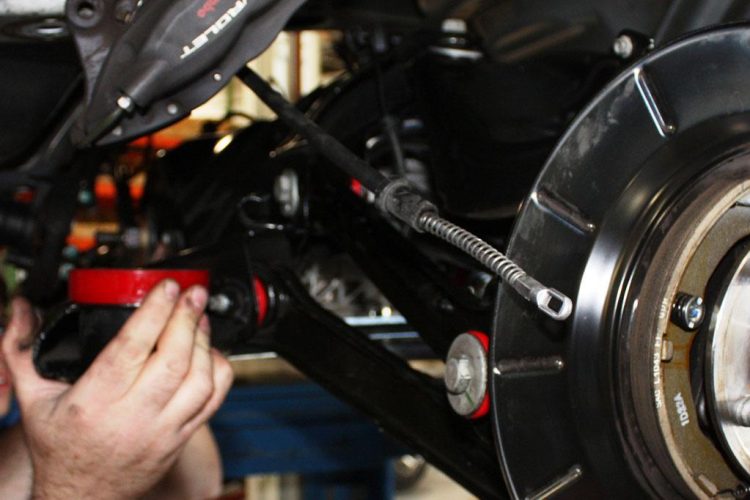Automotive suspension systems are critical for vehicle safety, ride comfort, and handling performance. Central to the smooth operation of suspension components are bushings – small but vital parts that provide cushioning and reduce friction between moving metal parts.
Among the various materials used for bushings, PTFE (Polytetrafluoroethylene) has emerged as a leading choice for self-lubricating bushings in automotive suspension systems, thanks to its unique properties and performance benefits.
What Are PTFE Bushings?
PTFE bushings are mechanical components made primarily from PTFE, a synthetic fluoropolymer known for its exceptional low-friction characteristics, chemical inertness, and resistance to heat and wear. When used in suspension systems, these bushings act as bearings or cushions between suspension arms, control arms, sway bars, and the chassis, minimizing metal-to-metal contact, reducing vibration, and improving ride quality.
The Role of Bushings in Suspension Systems
Bushings serve several key functions in automotive suspension:
- Vibration Damping: They absorb shocks and vibrations transmitted through the suspension, preventing harshness from reaching the vehicle cabin.
- Noise Reduction: By isolating components, bushings reduce squeaks and rattles.
- Alignment Maintenance: They help maintain proper alignment of suspension parts during movement.
- Wear Reduction: By separating metal parts, bushings reduce wear and tear on components.
Traditional suspension bushings are often made from rubber or polyurethane. While these materials offer flexibility and damping, they may suffer from premature wear, cracking, or require regular lubrication. This is where PTFE bushings provide distinct advantages.
Why PTFE for Suspension Bushings?
PTFE’s unique properties make it highly suitable for suspension bushings:
- Self-Lubrication: PTFE has a very low coefficient of friction (about 0.05 to 0.10), which means it reduces frictional forces without the need for external lubricants. This self-lubricating property minimizes maintenance and extends bushing lifespan.
- Chemical and Weather Resistance: PTFE is inert to most chemicals, oils, water, and road salts. It resists degradation and swelling in harsh environmental conditions, maintaining consistent performance.
- High Temperature Resistance: PTFE can withstand operating temperatures from -200°C to +260°C, suitable for automotive environments that experience wide temperature variations.
- Wear and Abrasion Resistance: PTFE’s molecular structure makes it resistant to wear, enhancing the durability of bushings under continuous movement and load.
- Load Bearing Capacity: When engineered with appropriate composite fillers or reinforcement (such as glass or carbon fibers), PTFE bushings can support heavy loads common in vehicle suspension systems.
Construction and Types of Self-Lubricating PTFE Bushings
Most self-lubricating PTFE bushings are not made from pure PTFE alone but as composite materials to improve mechanical strength and load capacity. These composites typically include PTFE blended with additives such as glass fibers, bronze, or carbon fibers.
There are two common types of PTFE bushings used in automotive suspensions:
- Solid PTFE Composite Bushings: These are molded from PTFE composites and provide a solid bearing surface.
- PTFE-Lined Metal Bushings: These consist of a metal shell (usually steel or aluminum) lined with a thin layer of PTFE. The metal provides structural strength, while the PTFE lining offers self-lubrication and wear resistance. This design is common in control arms and sway bar bushings.
Benefits of Using PTFE Bushings in Suspension Systems
- Reduced Maintenance: Self-lubricating PTFE bushings eliminate the need for regular greasing, which is especially beneficial for sealed or hard-to-reach suspension components.
- Improved Ride Comfort and Handling: PTFE bushings minimize friction and eliminate stiction, enabling smoother and more responsive suspension movement. This leads to better vehicle handling and smoother rides.
- Enhanced Durability: Resistant to wear, chemicals, and temperature extremes, PTFE bushings last longer than rubber or polyurethane alternatives, reducing replacement frequency and costs.
- Noise Reduction: By maintaining consistent, low-friction movement, PTFE bushings reduce squeaks and rattles commonly caused by worn or dry bushings.
- Corrosion Resistance: PTFE’s chemical inertness shields bushings from corrosion due to road salt, moisture, and other contaminants.
Challenges and Considerations
While PTFE bushings offer many advantages, there are considerations when integrating them into suspension systems:
- Cost: PTFE bushings tend to be more expensive upfront than traditional rubber bushings, though their longer service life can offset initial costs.
- Load and Design Limits: Pure PTFE has limited load-bearing capacity, so proper composite formulation or metal reinforcement is critical to meet suspension demands.
- Stiffness and Compliance: PTFE bushings are often stiffer than rubber, which may transmit more road noise and vibration unless carefully engineered for specific suspension designs.
Applications in Automotive Suspension
Self-lubricating PTFE bushings are increasingly used in various suspension components:
- Control Arm Bushings: Allowing smooth pivoting of the control arm for better wheel alignment and handling.
- Sway Bar Bushings: Providing low-friction rotation to improve vehicle stability during cornering.
- Trailing Arm Bushings: Absorbing lateral and longitudinal forces while reducing friction.
- Shock Absorber Mounts: Enhancing durability and reducing noise in shock absorber connections.
Future Trends
With the rise of electric vehicles (EVs) and advanced driver assistance systems (ADAS), suspension systems demand higher precision, durability, and reduced maintenance. Often combined with advanced composites and coatings, PTFE bushings are engineered to meet the demands of modern suspension systems.
Additionally, ongoing research into nano-fillers and hybrid materials aims to further improve PTFE bushings’ strength, wear resistance, and environmental sustainability, supporting the automotive industry’s move towards greener and longer-lasting components.

